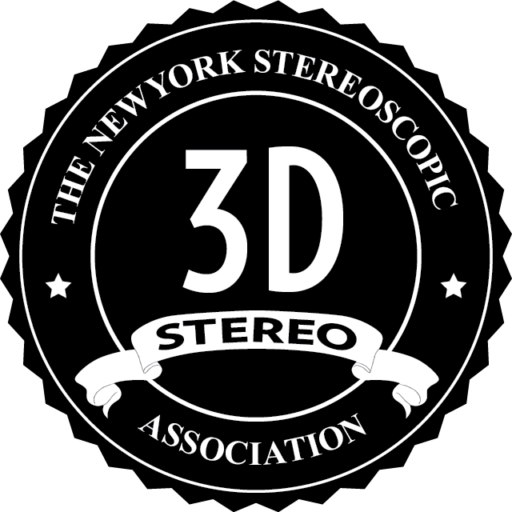TAJ
LOOKING GLASS – staff member joins us
UKRAINE video
The NYSA Presents! episode aired on March 8, 2025, delivered an engaging mix of 3D photography history, contemporary stereoscopic contributions, and cutting-edge holographic technology. Host Joe Pedota explored the legacy of Craftsman Guild’s tri-story cards, showcased a poignant video from Ukraine highlighting the Revolution of Dignity, and welcomed Arturo J. Real from Looking Glass Factory to discuss their latest 3D display innovations.
Joe Pedota kicked off the episode with his signature “Jukebox” segment, diving into the history of the Craftsman Guild of California, a manufacturer known for photographic viewers and a brief foray into cameras like the Classic 35 half-frame model. The spotlight was on their tri-story cards, a series of stereoscopic strips aimed at children, each featuring 10 image pairs printed on heavy-gauge paper. Notably, these cards were illustrated by artist PNC Satherfeld, a rare instance where the creator’s identity is documented, adding a layer of historical intrigue to these collectible 3D treasures.
The episode took a somber yet inspiring turn with a four-minute video from Yaroslav Gir (pronounced “Griy”) and his friend Volodimir, who donated 3D photos to Kyiv’s Museum of the Revolution of Dignity. The video, introduced by Joe, commemorated the Heavenly Hundred—heroes of the 2014 Maidan uprising during Ukraine’s Revolution of Dignity—and honored those lost in the ongoing Russian-Ukrainian conflict. Highlighting a street exhibition titled Heroes Maidan War Memory, the segment featured a symbolic cemetery near Independence Square, where flags, flowers, and candles memorialize fallen defenders, urging viewers to reflect on their sacrifices.
The episode’s centerpiece was an interview with Arturo J. Real, Community Manager for Looking Glass Factory, who introduced their latest innovation, the Looking Glass Go. Arturo shared his journey into 3D, sparked by a background in photography and film, and his work with Harvard’s CS50 computer science course. He detailed how his passion for 3D creation led him to Looking Glass, where he now helps users leverage tools like Blender, Unity, and Unreal Engine to create holographic content. The Looking Glass Go, a compact display powered by a single USB-C cable and compatible with devices like the iPhone 15 Pro or M1 iPads, was demonstrated live, showcasing interactive 3D models with no need for headsets or complex setups. Arturo also teased an iPhone app and online service that converts single images into 3D by generating depth maps, making 3D content creation accessible to novices. He offered NYSA viewers an exclusive discount code, valid through the weekend, and promised future “Walk Through the Looking Glass” segments to explore more features.
Joe wrapped up with a nod to the “Afterparty,” encouraging viewers to engage with Arturo and ask questions about the Looking Glass technology. He also shared two images from Yaroslav Gir, one depicting a 3D monitor at the Museum of the Revolution of Dignity and another presumed to feature Yaroslav and his wife, reinforcing the episode’s Ukrainian focus. Joe’s personal anecdotes, including his experience with satellite phones on the Arachnophobia film set in Venezuela, added a warm, relatable touch to the show. The episode closed with credits to the NYSA crew.
Craftsman Guild of California: No active website available; historical manufacturer of photographic viewers and tri-story cards.
Looking Glass Factory (Looking Glass Go, Looking Glass Portrait): https://lookingglassfactory.com/
Museum of the Revolution of Dignity: https://www.maidanmuseum.org/
Blender: https://www.blender.org/
Unity: https://unity.com/
Unreal Engine: https://www.unrealengine.com/
Harvard CS50: https://cs50.harvard.edu/
Red Hydrogen One: No active website; discontinued phone by RED and Leia Inc.
Fujifilm (Fuji 3D W3): https://www.fujifilm.com/
Olympus: https://www.olympus-global.com/
After Effects: https://www.adobe.com/products/aftereffects.html

